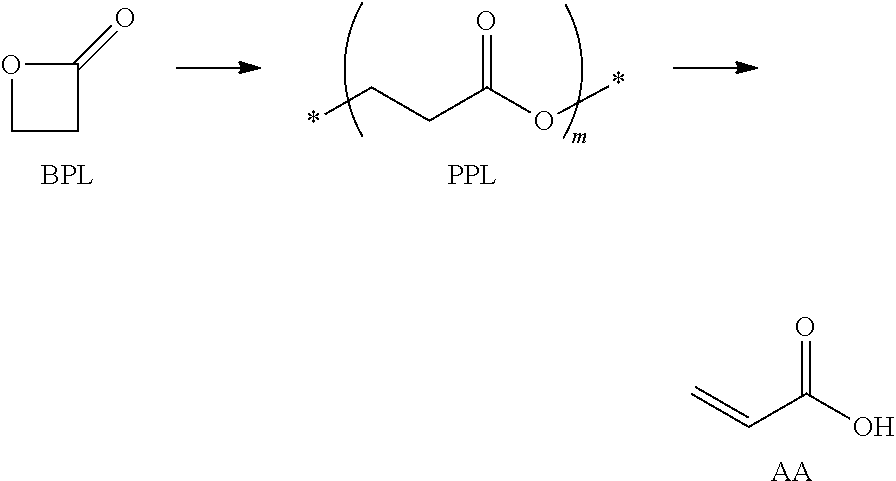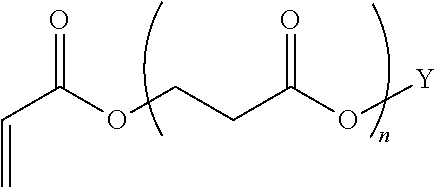Systems and processes for polymer production
a technology of polypropiolactone and polymerization process, which is applied in the field of polypropiolactone, can solve the problems of reducing the degree of polymerization, so as to achieve a high degree of polymerization and avoid adverse effects of side products
- Summary
- Abstract
- Description
- Claims
- Application Information
AI Technical Summary
Benefits of technology
Problems solved by technology
Method used
Image
Examples
embodiment 1
2. The method of embodiment 1, wherein the beta propiolactone is contacted with the chain transfer agent in the presence of a polymerization catalyst.
embodiment 2
3. The method of embodiment 2, wherein the polymerization catalyst is selected from the group consisting of:
[0365]a) an acrylate salt of a metal cation,[0366]b) an acrylate salt of an organic cation,[0367]c) a transition metal compound,[0368]d) an acid catalyst, and[0369]e) a base catalyst.
4. The method of embodiment 1, wherein the beta propiolactone is contacted with the chain transfer agent at a temperature greater than 50° C.
embodiment 4
5. The method of embodiment 4, wherein the temperature is in the range from 50° C. to about 250° C.
6. The method of embodiment 1, wherein at least 90% of polymer chains in the composition have an acrylate end group.
7. The method of embodiment 1, wherein at least 90% of polymer chains in the composition are the polypropiolactone chain of Formula (I).
8. The method of embodiment 1, wherein the composition has a polydispersity index (PDI) of less than 2.
9. A method for the production of acrylic acid comprising heating a polypropiolactone chain of Formula (I):
[0370]
[0371]where n is an integer from 10 to about 1,000 and Y is either —H or a cation.
10. A polypropiolactone composition comprising polypropiolactone chains of Formula (I)
[0372]
[0373]where n is an integer from 10 to about 1,000 and Y is either —H or a cation, and
[0374]at least 90% of polymer chains in the composition are of formula (I).
PUM
| Property | Measurement | Unit |
|---|---|---|
| wt % | aaaaa | aaaaa |
| temperature | aaaaa | aaaaa |
| temperature | aaaaa | aaaaa |
Abstract
Description
Claims
Application Information
 Login to View More
Login to View More - R&D
- Intellectual Property
- Life Sciences
- Materials
- Tech Scout
- Unparalleled Data Quality
- Higher Quality Content
- 60% Fewer Hallucinations
Browse by: Latest US Patents, China's latest patents, Technical Efficacy Thesaurus, Application Domain, Technology Topic, Popular Technical Reports.
© 2025 PatSnap. All rights reserved.Legal|Privacy policy|Modern Slavery Act Transparency Statement|Sitemap|About US| Contact US: help@patsnap.com



